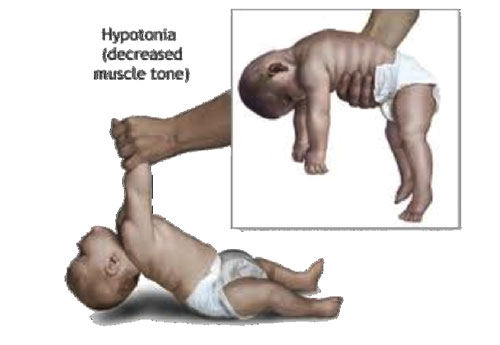What is Hypotonia?
 Every mother expects her child to sit, crawl and walk at a certain age, mostly because she compares her child to other children of the same age.
Every mother expects her child to sit, crawl and walk at a certain age, mostly because she compares her child to other children of the same age.
Advertisement
It’s therefore a major concern when her child isn’t able to “catch up" with her neighbours’ children.
Reaching a particular developmental milestone is different even amongst siblings; just because your first child walked independently at seven months does not imply that all your other children will definitely walk at seven months.
Some children have difficulty attaining early developmental milestones due to Hypotonia.
Overview
Hypotonia simply means decreased muscle tone. Hypotonia is a symptom of a specific diagnosis although sometimes the cause is unknown.
Most children with Hypotonia do not have a severe underlying condition but the severity of Hypotonia depends on the underlying condition.
Healthy muscles have an amount of tension hence they are not fully relaxed even when that particular muscle isn’t being used. This retained tension is known as muscle tone. For example, you depend on the normal muscle tone in your upper limb to pick food with your hand into your mouth whenever you eat, otherwise a simple task like that could get complicated.
A child with Hypotonia may be described by the mother as “soft” or “floppy”.
Hypotonia is not the same as muscle weakness, but muscle weakness may also result due to the decreased muscle tone.
Symptoms of Hypotonia may continue as the child grows older and may sometimes worsen.
Types of hypotonia
There are two main types of Hypotonia:
Congenital Hypotonia (present at birth)
This is usually caused by genetic (inherited) conditions that disrupt the normal development of the nerves, muscles and brain.
Acquired Hypotonia (after birth )
This may be due to an injury/ trauma or an underlying medical condition which affects the brain and/or the spinal cord and the muscles.
Signs and symptoms
If your baby has Hypotonia at birth, then symptoms are noticeable by six months and before the age of one.
These symptoms include:
• Poor control of neck muscles.
• Difficulty in sucking, swallowing and a weak cry.
• Baby feels “soft” when you hold him/her, as if the baby is about to slip from your hands.
• Baby finds it difficult to sit independently/ has a noticeable round back when he/she sits.
• Baby finds it difficult to crawl, pull himself to stand or take steps at age one
• Hypermobility of the joints - The range of movement at the joints is excessive, especially at the hips, elbows and knees.
• Unwillingness of the baby to lie on his/her stomach to play.
• Rolling as a means of movement instead of crawling.
• Poor sucking and chewing.
• Drooling and speech difficulties.
Causes of Hypotonia
The cause of Hypotonia is basically injury to the brain, spinal cord and /or muscles. Hypotonia is a symptom that may be a feature of various underlying health conditions, some of which are inherited (passed on from one family member to another). For example, Down’s Syndrome.
It may also occur as a result of cerebral palsy, (in which a number of brain-related problems affect the baby's co-ordination and movement) and after infections such as meningitis (an inflammation of the membranes that cover the brain and spinal cord).
Diagnosing Hypotonia
Tests which may help to diagnose the underlying condition that is causing Hypotonia include;
• Blood tests to find out causes e.g. infections.
• Detailed scans such as a Computerised Tomography (CT) scan or a Magnetic Resonance Imaging (MRI) scan to determine any neurological causes.
• Electroencephalogram (EEG) to find out the brain activity.
By Dorothy Akua Adjabu / The Mirror / Ghana
The writer is a senior physiotherapist at the 37 military hospital. Email: [email protected]



